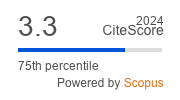Article | Open Access
Language Provision in Education: A View from Scotland
| Views: | 4589 | | | Downloads: | 3536 |
Abstract: A tension between mobility and inclusion can be seen in public sector attempts to respond to the increasingly multilingual nature of the Scottish population. Increased mobility has contributed to greater linguistic diversity, which has led to growing demand for multilingual public services. Legal instruments and education policy in Scotland provide a promising framework in terms of promoting language learning and multilingualism, but implementation is not always successful and responding to linguistic diversity among pupils is beset with challenges. This article will consider some of these challenges, both practical and attitudinal, reflecting on language teaching in Scotland and on issues raised during interviews with officials from the English as an additional language (EAL) services in Edinburgh and Glasgow. Language teaching often does not take into account the linguistic diversity present—despite the opportunity for a more inclusive approach offered by Scottish Government strategy—and this risks reinforcing negative beliefs about significant allochthonous languages in Scotland. In these circumstances, meeting the linguistic needs of increasingly multilingual school populations in an inclusive way is a challenging task.
Keywords: education; English; inclusion; language; mobility; multilingualism; school; Scotland; teaching
Published:
© Róisín McKelvey. This is an open access article distributed under the terms of the Creative Commons Attribution 4.0 license (http://creativecommons.org/licenses/by/4.0), which permits any use, distribution, and reproduction of the work without further permission provided the original author(s) and source are credited.


